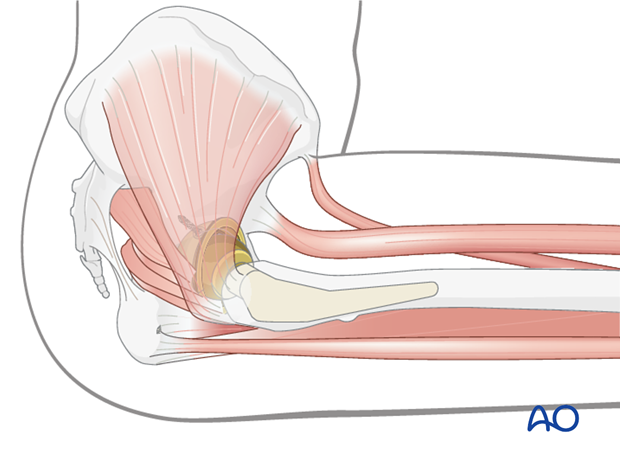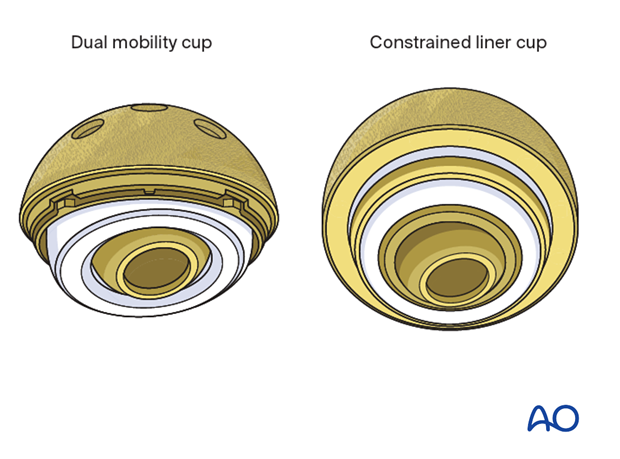Abductor insufficiency
1. Clinical relevance
The hip abductor mechanism is critically important to provide proper stability and function of the hip joint. It is responsible to counterbalance the hip joint reaction forces that are multiple folds greater than the patient's body weight.
If there is abductor mechanism insufficiency the patient is at high risk for postoperative dislocation, and may suffer from: chronic pain, limp, and altered gait.

2. Surgical considerations
Soft tissue repair, reconstruction, or tissue transfer can be performed but have unpredictable success.
Revision of fixation should be performed for symptomatic fracture migration, nonunion, and device failure.
Consider revision using a larger diameter head, a constrained liner, or the dual mobility device if a dislocation occurs.

3. Postoperative care
Hip abduction brace with modified postoperative physical activities can improve long term functional outcomes.













